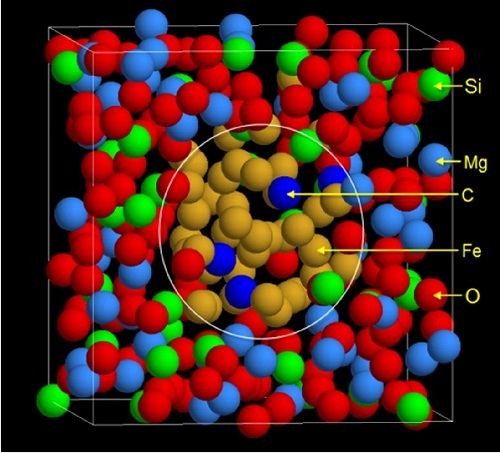Professor ZHANG Yigang and his cooperator publish their research on famous academic journal Proceedings of the National Academy of Sciences of the United States of America.
They use two-phase first-principles molecular dynamics to derive this partition coefficient of C between liquid iron and silicate melt. We calculate a value of 9 ± 3 at 3,200 K and 40 GPa. Using this partition coefficient and the most recent estimates of bulk Earth or mantle C contents, they infer that the Earth’s core contains 0.1–0.7 wt% of C. Carbon thus plays a moderate role in the density deficit of the core and in the distribution of siderophile and chalcophile elements during core–mantle segregation processes. The partition coefficients of nitrogen (N), hydrogen, helium, phosphorus, magnesium, oxygen, and silicon are also inferred and found to be in close agreement with experiments and other geochemical constraints. Contents of these elements in the core derived from applying these partition coefficients match those derived by using the cosmochemical volatility curve and geochemical mass balance arguments. N is an exception, indicating its retention in a mantle phase instead of in the core.

Fig.1. Snapshot of atomic configuration in the simulation cell after the center of mass of the Fe cluster is moved to the center of the simulation cell and all of the atoms are moved accordingly by using the periodic conditions of the simulation cell. (Image by ZHANG)
Zhang et al. Carbon and other light element contents in the Earth’s core based on first-principles molecular dynamics. PNAS, 2012, 109(48): 19579-17583 (Download Here)